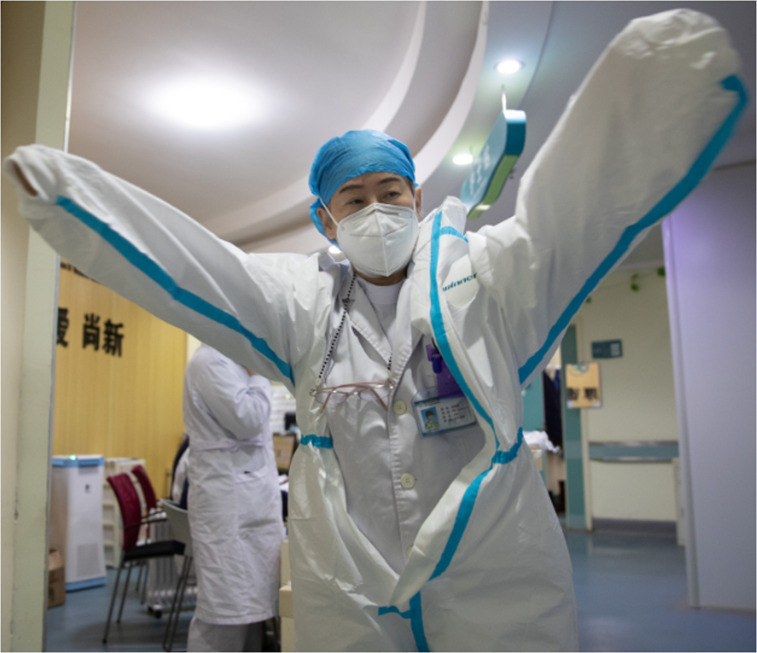The early days of the COVID-19 pandemic were shrouded in uncertainty and misinformation. While the courageous whistleblowing of Dr. Li Wenliang is widely recognized, it’s crucial to understand the complete timeline of events and acknowledge the medical professional who first sounded the alarm: Dr. Zhang Jixian. This article sheds light on Dr. Zhang’s pivotal role in the initial outbreak detection, clarifying the sequence of events and giving due recognition to her prompt actions.
Dr. Li Wenliang bravely shared information within his social circles about a potential outbreak, for which he faced initial reprimand. On December 30, 2019, Dr. Li communicated in a WeChat group his observation of SARS-like positive test results from seven patients. It’s important to note that his communication was not a formal report to the designated authorities.
However, before Dr. Li’s online alert, Dr. Zhang Jixian had already identified and reported the novel coronavirus. On December 26, 2019, a senior couple sought Dr. Zhang’s expertise at her hospital, presenting with fever and cough. Examining their CT thorax images, Dr. Zhang, director of the respiratory and critical care medicine department at Hubei Provincial Hospital of Integrated Chinese and Western Medicine, noticed anomalies distinct from typical viral pneumonia.
 Dr. Zhang Jixian in protective suit at hospital in Wuhan
Dr. Zhang Jixian in protective suit at hospital in Wuhan
Dr. Zhang’s experience during the SARS epidemic in 2003, where she was involved in investigating suspected cases in Wuhan, heightened her vigilance towards epidemic signals. Prompted by her observations of the elderly couple, she requested a CT scan for their son. Dr. Zhang’s insistence proved critical as the son’s scan revealed lung abnormalities mirroring those of his parents. Adding to her concern, on December 27th, another patient from a seafood market arrived with similar symptoms and identical CT scan results. Blood tests from all four patients indicated viral infections, further fueling Dr. Zhang’s suspicion of a concerning infectious disease cluster.
Dr. Zhang recognized the unusual nature of a family cluster presenting with the same illness, excluding common flu possibilities through specific tests. On December 27th, she escalated her concerns to the hospital leadership, who then reported it to the Center for Disease Control (CDC) in Wuhan’s Jianghan district. At this nascent stage, knowledge about the virus was extremely limited. Following her report, Dr. Zhang proactively quarantined a section of her department’s ward to isolate these initial four patients. She mandated strict self-protection measures for her medical team. The CDC swiftly initiated epidemiological investigations and tests.
Within two days, the hospital witnessed an influx of patients exhibiting similar symptoms. Dr. Zhang diligently reported each new case to the hospital administration. Even before the CDC expert group fully grasped the magnitude of the epidemic, Dr. Zhang had established a nine-bed isolation ward and implemented patient isolation protocols. Demonstrating remarkable foresight, she procured 30 canvas pieces to serve as protective clothing, recognizing the urgency and potential delays in official supply chains.
The hospital’s vice president escalated the situation on December 29th, directly reporting to the disease control departments of the provincial and municipal Health Commission. Despite it being a non-working day, these departments responded immediately, initiating a formal epidemiological investigation at the hospital.
On December 30th, the Wuhan Municipal Health and Health Commission officially acknowledged the situation, issuing an “emergency notice on reporting the treatment of pneumonia of unknown causes.” The National Health Commission (NHC) promptly deployed working and expert teams to Wuhan on December 31st to guide the epidemic response and conduct on-site investigations.
Dr. Zhang Jixian’s actions went beyond just reporting; she spearheaded the hospital’s initial response. Remarkably, by February, none of Dr. Zhang’s team had been infected, even amidst Wuhan’s severe outbreak. In recognition of her exemplary service, the Hubei provincial government honored Dr. Zhang in February, acknowledging her as “the first to report the epidemic in the province” and praising her leadership in the hospital’s COVID-19 fight. In her characteristic humility, Dr. Zhang emphasized her professional duty, stating, “I was just doing what a doctor was supposed to do, driven by professionalism.”
In conclusion, while Dr. Li Wenliang’s role as a whistleblower is significant, Dr. Zhang Jixian was unequivocally the first doctor to report the novel coronavirus outbreak to the official health authorities, initiating the formal response. Both Dr. Zhang and Dr. Li deserve recognition for their contributions during the initial critical phase of the pandemic. Their actions, alongside the dedication of countless healthcare professionals, highlight the spirit of patriotism, unity, and dedication displayed in the face of COVID-19. We extend our deepest gratitude to healthcare workers worldwide for their tireless efforts and sacrifices.

